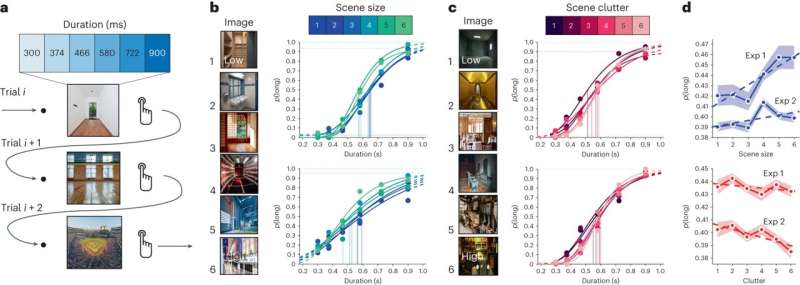
A trio of psychologists at George Mason University in the U.S. has found evidence that contradicts the theory of the universal internal clock. In their study, published in the journal Nature Human Behavior, Alex Ma, Ayana Cameron and Martin Wiener conducted experiments in which volunteers looked at different types of images and estimated how much time passed while they were looking at them.
The theory of the universal internal clock suggests that humans perceive the passage of time in generalized steady increments that prevent confusion concerning the amount of time that has passed over a certain span.
The theory has several exceptions, of course—anecdotal evidence suggests that time passes “faster” when someone is having fun and “slower” when they are bored. For this new study, the researchers conducted an experiment involving perception of time passage as people focused their attention on different types of images.
A total of 170 volunteers participated in one of four experiments. In the first two, volunteers looked at photographs with varying degrees of size and clutter—some scenes were large and others cluttered, like a messy office, while others were nearly barren. They then asked the volunteers how long they believed they had been looking at the images.
In the second two experiments, volunteers looked at photographs and then estimated how long they thought they had been looking at them, and also how memorable they thought they were. The participants returned to the lab the following day to take a memory test to see whether they could identify the pictures they had looked at.
The research team found that the volunteers tended to overestimate the amount of time they viewed cluttered scenes, while underestimating the amount of time they viewed tidy areas. They also found the perception of time varied depending on the memorability of an image.
When viewing those they felt were the most memorable, the volunteers were also more accurate in their assessment of how much time had passed—and they were more likely to remember them the next day. The experiments suggest that time perception is influenced by sensory perception.
More information:
Alex C. Ma et al, Memorability shapes perceived time (and vice versa), Nature Human Behaviour (2024). DOI: 10.1038/s41562-024-01863-2
© 2024 Science X Network
Citation:
Image viewing experiments challenge theory of universal internal clock (2024, April 23)
image-viewing-theory-universal-internal.html
.
. The content is provided for information purposes only.
